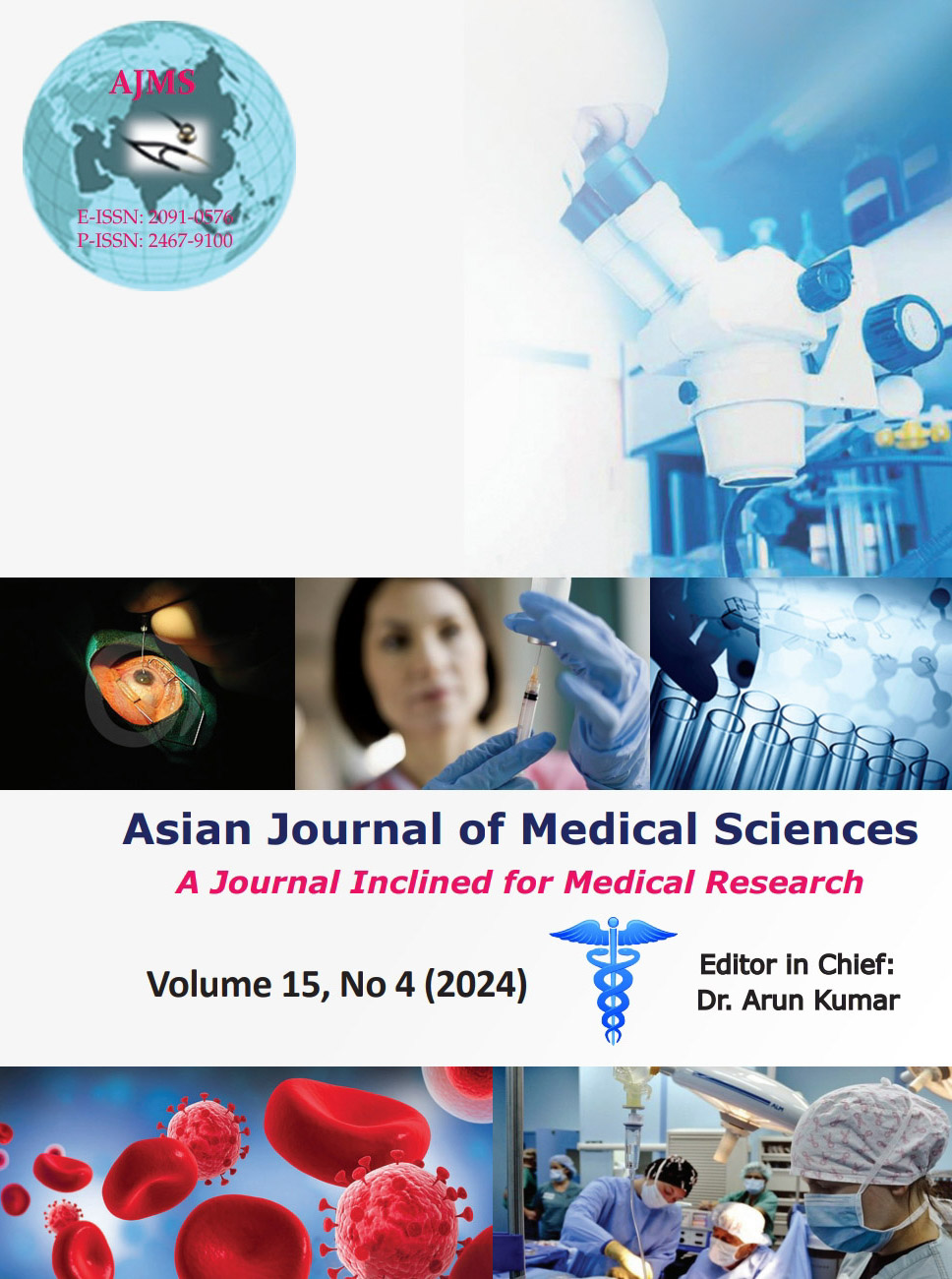Clinicopathological profile and its association with endoscopic findings in dyspeptic patients in a tertiary care hospital: A cross-sectional study
Keywords:
Dyspepsia; Gastroenterology; Helicobacter pylori; GastritisAbstract
Background: The prevalence of dyspepsia in general practice consultations ranges from 4% to 5%, whereas it accounts for approximately 20–40% of consultations in the field of gastroenterology.
Aims and Objectives: This study was carried out with the objective of estimating the percentage of Helicobacter pylori-infected people who havedyspepsia and exploring the relationship between infection and clinical manifestation.
Materials and Methods: This was a hospital-based observational study conducted at a tertiary care teaching health-care facility from January 2023 to June 2023. All 50 patients with symptoms of dyspepsia were included in the study with the help of non-probability purposive sampling after their written and informed consent. A pre-designed and pre-tested structured pro forma was used to collect detailed history, clinical findings, and endoscopic findings from patients with dyspepsia. Gastritis and ulceration characteristics were observed by endoscopy, while histopathological examination (HPE) and rapid urease test (RUT) (for confirmation of H. pylori) were performed on endoscopy-obtained biopsy specimens.
Results: Mean age of the patients was 46.69±15.78 with 65.4% (n=34) being males. The sample was classified into cases positive for H. pylori (13; 25%) and cases negative for H. pylori (39; 75%), according to the RUT outcome, 21.20% (n=11) had a history of smoking, 25% (n=13) had Type II DM, and 25% of patients presented with upper abdominal bloating and epigastric pain. On endoscopy, the majority of patients revealed grade III (n=22, 42.30%) gastritis and no ulceration (n=29, 55.80%), with the maximum showing a chronic non-specific lesion (n=20, 38.5%) on HPE. Comorbidities (χ2=12.56, P=0.028), endoscopic findings (χ2=10.50, P=0.032), and ulcerations (χ2=20.02, P<0.001) were the significant findings associated with H. pylori infection.
Conclusion: The timely identification and expeditious management of H. pylori infection are imperative to mitigate the occurrence of severe complications.
Downloads
Downloads
Published
How to Cite
Issue
Section
License
Copyright (c) 2024 Asian Journal of Medical Sciences

This work is licensed under a Creative Commons Attribution-NonCommercial 4.0 International License.
Authors who publish with this journal agree to the following terms:
- The journal holds copyright and publishes the work under a Creative Commons CC-BY-NC license that permits use, distribution and reprduction in any medium, provided the original work is properly cited and is not used for commercial purposes. The journal should be recognised as the original publisher of this work.
- Authors are able to enter into separate, additional contractual arrangements for the non-exclusive distribution of the journal's published version of the work (e.g., post it to an institutional repository or publish it in a book), with an acknowledgement of its initial publication in this journal.
- Authors are permitted and encouraged to post their work online (e.g., in institutional repositories or on their website) prior to and during the submission process, as it can lead to productive exchanges, as well as earlier and greater citation of published work (See The Effect of Open Access).




